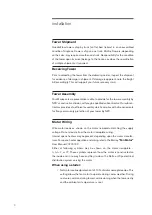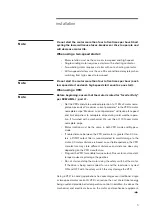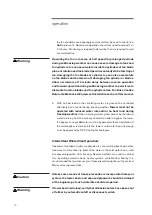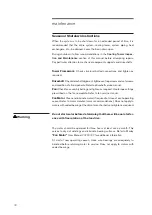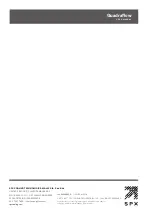
11
operation
It is the operator's responsibility to prevent the formation of destruc-
tive (hard) ice on the cooling tower fill. Certain guidelines should
be followed:
1. Do not allow the tower’s leaving water temperature to drop below a mini-
mum allowable level—say 2°C to 5°C. If such low temperature operation is
necessary or beneficial to your process, establish the minimum allowable
level as follows:
During the coldest days of the first winter of operation, observe whether
any ice is forming on the louver face, particularly near the bottom part of
the louver face. If hard ice is present on the louvers, you must increase
the allowable cold water temperature. If the coldest possible water is ben-
eficial to your process, ice of a mushy consistency can be tolerated—but
routine periodic observation is advisable.
If the minimum allowable cold water temperature is established at or
near minimum heat load, it should be safe for all operating conditions.
Having established the minimum allowable cold water temperature,
maintaining that temperature can be accomplished by fan manipulation,
as outlined in Item 4 on page 8. However, in towers of more than one
cell, where fans are manipulated sequentially, please realize that the water
temperature will be significantly lower in the cell or cells operating at the
highest fan speed than the net cold water temperature produced by the
entire tower would indicate. Wintertime operation of multicell towers at
low cold water temperature levels requires that the operator be especially
watchful.
2. As cold air enters the louvers, it causes the water flowing over the fill to
be drawn inward toward the center of the tower. Thus, under fan opera-
tion, the louvers and lower periphery of the tower structure remain partly
dry, seeing only random splashing from within the tower—plus normal
atmospheric moisture from the entering air. Such lightly wetted areas are
most subject to freezing.
Therefore, if excessive ice forms on the louvers, stop the fan for a few
minutes. With the fan off, the water flow will increase in the vicinity of the
louvers and reduce the ice buildup.
3. Under extended extreme cold conditions, it may be necessary to operate
the fan in reverse. This forces warm air out through the louvers, melting
any accumulated ice—adequate heat load must be available. Reversal
of fan should only be done at half speed or less. Reverse operation of
Caution
Caution
➠




